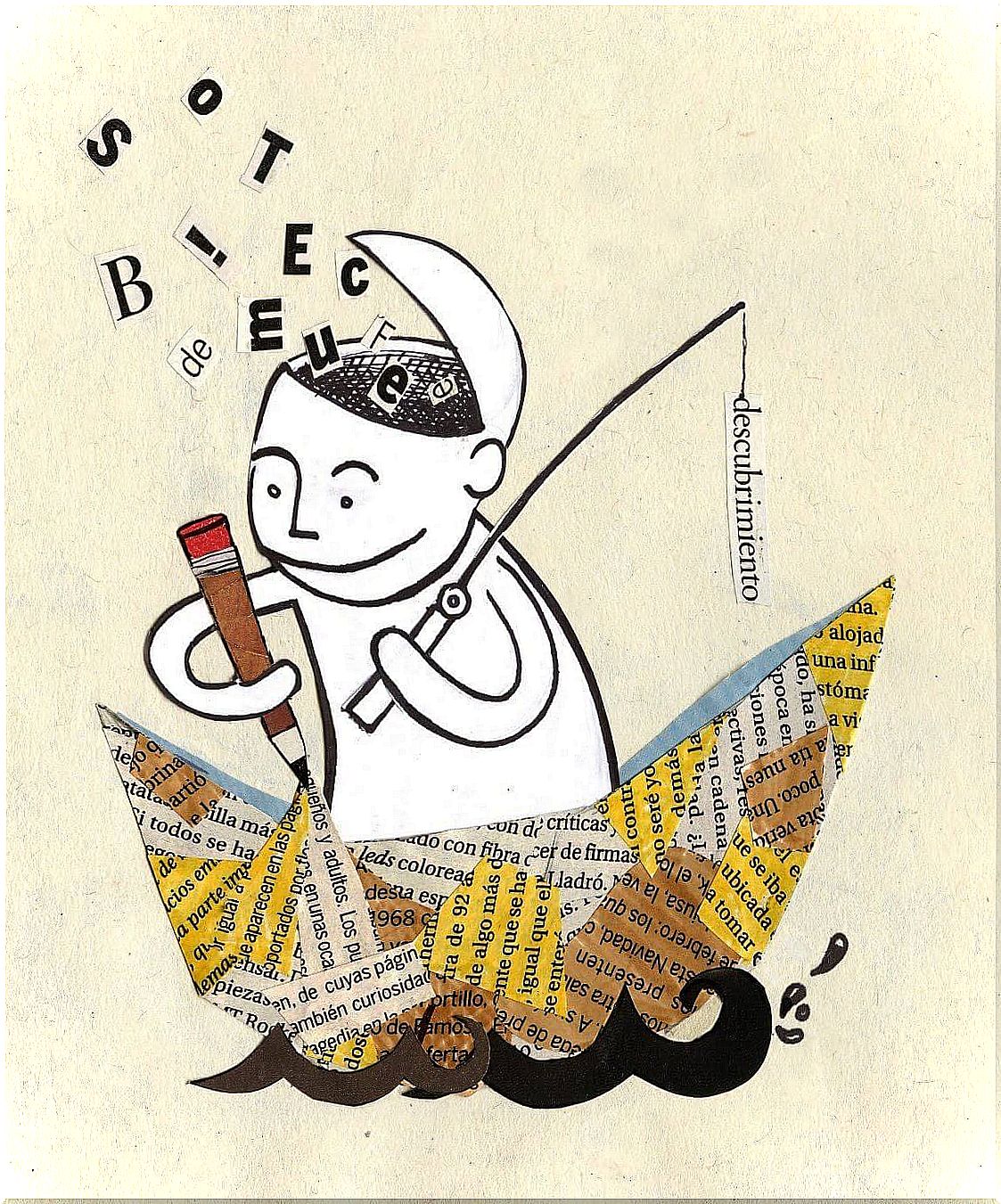What Do You Know About Narrative Therapy?

Narrative therapy uses the narrative for therapeutic purposes. The narrative method uses a point of view and a narrator’s voice for the presentation of a literary or theatrical story. Narrative therapy is respectful and has a non-reprehensible attitude. It should follow the principle that people are experts in their own lives (Morgan, 2004).
As I said, narrative therapy seeks to create a respectful, non-reprehensible attitude to therapy and social work. In addition, it sees the problem as a unit separated from the individual. It also believes that people have many qualities, skills, beliefs, values, responsibilities and abilities. These will help him reduce the negative influence of problems in life.
Narrative means events joined together in a sequence, through time and in accordance with a theme. We humans interpret or give meaning to our daily experiences. We are always looking for ways to explain events or give them meaning.
This significance is what gives shape to our history, our narrative. We have many stories about our lives and our relationships. For example, we have stories about ourselves, our abilities, difficulties, skills, actions, desires, work, successes and mistakes. The way we interpret them and give them meaning and order has an effect on how we can continue to write our story.
We are talking about a sequence of events joined by a timeline. The thread we choose is based on what best fits our perception of the dominant story. The threads that do not fit into the dominant story remain hidden or have less significance (or modified meaning) in light of the dominant theme.
For example, if the dominant story is that you are a good driver, the story becomes significant and reinforces this conclusion every time you follow the traffic rules. The day you are fined does not fit into the dominant story. That memory will be forgotten or trivialized because it does not fit into the usual story frame.

What are the overall goals of narrative therapy?
The primary goal of narrative therapy is to offer the person space to define their own life. This according to an adaptable narrative model (which is good for him or her). The secondary objectives are as follows:
- To incorporate new elements into people’s stories.
- Help the patient build a better future.
- To be able to share these new sentences with our surroundings, thus facilitating a new relationship dimension.
It may seem strange, but all people are storytellers. We have stories that we tell to others and those we tell to ourselves. In addition, there is usually a lot of truth in every story, as well as ingenuity.
We are born with a narrative impulse. In this way we socialize and create a development of the self and establish an autobiographical memory that gives us meaning. Personal storytelling is the way we explain our lives. We are the ones who create our world, and therefore those who are responsible for its interpretation.
This offers us the opportunity to highlight the first difference between the problem and the person. From this difference comes the great possibility that the person can value their own assets and analyze the problem from a different point of view. The story of a person will be presented through interconnected documents with the corresponding interpretation we make of them. From there, a narrator’s voice and action will be established with the patient, and the therapist can intervene.
In addition, we decide what to include and what to exclude from our story, as part of the narrative therapy. Our personal story will be influenced by sociocultural factors, as well as more individual factors, such as genetics.
Language is the tool we use to create (or recreate) and present ourselves. It is also useful when dealing with our inner world of thoughts and feelings, which underlines the importance of the analysis of language. If we create our reality from the explanations we give of it, this story will define what is called the “effects of the dominant story”.
These effects are those that can be drawn from the tone of our most global or general history. If our story is one of abandonment and loss (written and told by ourselves), the effect of this dominant story will be melancholy.
The therapist’s role in this model will be shifted from being an expert to being a partner to the one asking for help – to co-authoring the therapeutic process (White, 2004).
The idea behind narrative therapy is simply the ability to find an alternative story. A deconstruction of the dominant story in favor of a renewed and different story.
Reflection is in favor of the new story, with a focus on what we call isolated achievements. They are the ones that give us the opportunity to introduce new information and / or focus. Thus , they give us the opportunity to build a new story and / or identity. This is one of the cornerstones of narrative therapy.

This technique is both very simple and extremely complicated. It is simple in that it represents a linguistic separation of the problem and the patient’s personal identity. The complicated and delicate part is how this is achieved. It is through the careful use of language that the therapeutic conversation that the person’s healing begins and is finally achieved.
The novelty of the narrative method is that it offers us a useful sequence of questions that consistently produces a liberating effect on people. Following this therapeutic sequence is like building an arch stone by stone. If you try to take the last step without patiently laying the first stones in the foundation, the vault will not hold.
We assume that our life is as it is, but we can always look at it in a different way. In the end , everyone can rewrite their story as they wish (Garcia – Martinez, 2012). There are three dimensions around the narrative matrix that make a coherent, complex story possible; or even a series of stories (Goncalves, 2002).
- Narrative structure: the construction of a meaning about one’s experiences through an interconnecting process between the different narrative periods in our lives. The structure consists of:
- A beginning that is when our story begins. We can take the example of a client who comes to the first counseling and does not know where he or she should start. One of the therapist’s answers may be “from the beginning” or “where it is easiest to start explaining your story” (this will be the beginning).
- History development. This includes specific event, internal response, the main characters’ goals, the actions these characters perform, cause and effect, and, finally, the context.
- An end, which is considered to be when certain results and / or conclusions have been reached in the story.
- Narrative process: this has to do with the way we explain our lives. It means the tone we set for our lives (for example, dramatic commitment).
- Narrative content: refers to the diversity and multiplicity of the narrative production or themes and intrigues that we have. Sometimes we can become like a broken gramophone record and only dwell on old unsolved problems.

The first step to changing our internal dialogue:
Internal dialogue is interrupted in the same way as it begins, through a conscious act. You are the person you say you are, but you can change that if you start speaking differently (Castaneda, 1994). You can tell yourself that you are different. Allow me to present a series of exercises for working with the internal dialogue – the voice that continuously speaks to and translates reality:
- Know your internal dialogue: pay attention to the form and content of your internal dialogue. Think about whether it is a destructive or constructive dialogue, anxious or calm. In short, negative or positive. To change it, we must first know its content, these most frequent thoughts we use.
- Formulate the right questions: analyze the situation that arises when you change the questions you ask yourself. Instead of asking, for example, “why did this happen to me?” can we ask ourselves “what can I learn from this situation?”
- Change focus: you can change the way you talk to yourself. It can help you start talking to yourself like a loving mother talks to a child. Incorporate warmth and kind words into your inner dialogue.
There are many tools available to explore the different aspects of our story. This includes metaphors, stories and therapeutic letters and more. Let’s take a look at these resources now:
- Life stories: stories meant to give meaning or justify a particular view of events occurring.
- A little luck around oneself: this is about writing a letter to someone we have not had contact with in a long time.
- Ten years later: a description of how you look at yourself in 10 years. A description of how you will be physically, internally, at work, relationships with others and hobbies.
- What you prefer: think about and write down what you prefer. Make sure and give yourself the pleasure of expressing freedom through your own choices.
- Spaces: divide a grid into different areas and attribute each of them to an important person in your life, a significant place, the funniest events and the most enjoyable emotions. Also include the biggest dreams and relationships that have made you mature and grow.
- I remember…: a person is invited to end this sentence without thinking too much about the answer. You can use as many unfinished sentences as you want to explore and work with.
- Love the mystery: it’s about looking inward for the questions that have no answers.

A metaphor is a linguistic form that makes an unspoken analogy between two different entities. A dramatic tool that captures attention and offers a changed framework through which the patient can consider a new experience (Lankton and Lankton, 1983).
There are three types of metaphors used in the therapy process:
- Those who refer to the therapist’s personal experiences.
- Those who refer to obvious truths.
- Stories adapted to the person’s circumstances.
Therapeutic metaphors can be used to formulate an opinion, ideas, changes, access to and use aids or personal knowledge, implant specific ideas, and so on.
On the other hand , stories are expressions of essential philosophical truths, explanations or nature, or dreamed stories. These stories are therapeutic because the person has the opportunity to find their own solution through the way they recreate their story and the conflicts that arise in it.
The story does not refer to the outside world, although it can be realistic enough and have everyday elements woven into it. The unnatural in these stories is an important factor. This is because it makes it clear that the reason for these stories is not useful information about the external world but internal processes that take place within the individual. (Gordon, 1978).
In short, when we tell our personal stories to strangers, we get rid of them and they become then. This allows us to start creating a future that is attractive. When we document these stories so that they do not fall into oblivion and can serve as inspiration. The ultimate goal therefore people are to understand the power of the way they tell and what they tell, and how this influences the way in which we behave in this now.
Maybe narrative therapy is for you?
Bibliography:
White, M. (2002) “The narrative focus on the experience of therapists”. Gedisa.
Nomen Martín, L. (2016) “50 psychotherapeutic techniques”. Pyramid.









